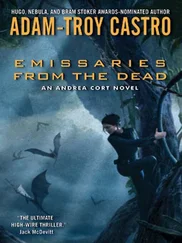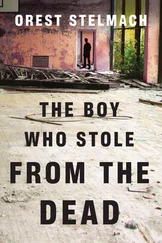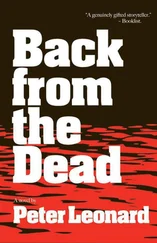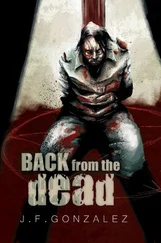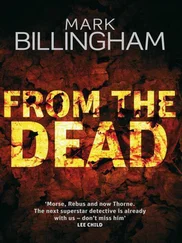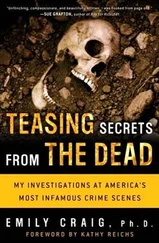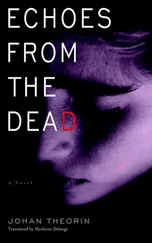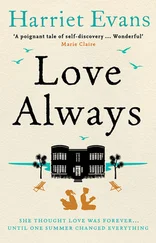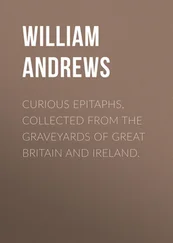“I know you don't like us to go tromping around through a fire when we've got potential murder victims,” Sam went on. “So once the coroner and I confirmed that we had a suspicious situation, I had everybody just back off until you got here. But the biggest body is over there.” He pointed with his chin while lifting a burned beam out of our way. “Firefighters found that one right off-the others were so little that it took a while. But nothing's been disturbed. Even the firefighters stopped spraying heavy water once they realized there were bodies in here, just a fine mist to keep the fire down.”
Sam stopped talking abruptly as though he was trying to get control of his voice, and I had to stifle an impulse to put a comforting hand on his arm. Instead, keeping my own voice casual, I said, “Okay, Sam, that's good. Why don't you keep filling me in while I'm getting my stuff together?”
Sam followed me out to my van, talking more naturally now. “The neighbor says that a woman, Shirley Bowles, lived here with her two kids, Amy and Brian. Seems she got married to man she hardly knew back about a month ago, 'cause she thought he could help her out with the kids. That man, McKinney, was around when they were trying to put out the fire, but he left when the firemen started asking the whereabouts of Shirley and the little ones. He came back for a while, but then when they started finding bodies, he disappeared for good.”
I cast a furtive glance into the woods, which were turning dark with the setting sun. “Where is he now?”
Sam saw what I was thinking and, suddenly, he grinned. “I don't know, Doc, but I've got men out looking for him. I've also got sharpshooters posted around this place, just in case he tries something funny. You know I always cover your back.”
He was right there. Once, his deputies had literally shielded my body with their own when a distraught father had sneaked up to the periphery of our crime scene with a rifle, threatening to shoot me and the coroner during our court-ordered exhumation of his two children.
I grinned back. “Okay, Sam. How about you watch out for me, and I'll try to help us nail whoever did this?”
I climbed into the one-piece navy jumpsuit I wear at most crime scenes, along with the matching cap that proudly announced “State Medical Examiner.” After I pulled on my fireproof boots, I strapped heavy pads across the front of my knees so I could crawl over anything in my path, pulled on a pair of thin leather gloves, and reached for a stack of the plastic snap-lid boxes I keep in my van for collecting fire-scene evidence.
Back in the house, I knelt beside the biggest victim and lifted off the large pieces of burned wood that had half-buried the body. Then I gently brushed away the loose debris from what used to be the victim's face with a large, soft paintbrush about four inches wide, careful not to disturb any bone fragments that might be in the vicinity. Like any housewife, I brushed the ashes into an ordinary dustpan, and then-contrary to most standard housekeeping manuals-slid them carefully into a paper bag to look at later under a magnifying lens.
The victim's face had all burned away, but I could see by her bones that she was a female. What remained of her forehead was smooth and rounded, or “bossed,” while the bone above her eye sockets was smooth, without the heavy brow ridge that most men have. Her bones also told me that she was an adult: Her skull bones and their connecting growth plates, or suture lines, showed signs of complete closure, as opposed to a child's partially open skull. And this woman's mouth was clearly full of permanent teeth. A large section of her skull was missing, but I could see the broken fragments-some still attached to her body, others scattered among the debris. Rearing back on my haunches, I tried to keep my hands and body out of the way as I asked the detective standing beside me to take several photos.
When I'm working a crime scene-especially a fire scene, where all the evidence is so fragile-I continually have to remind myself and everyone else to slow down . After all, the victims are already dead. They're not going to get any deader. Despite the natural human reaction to respect the dead by removing and cleaning up their bodies as soon as possible, we actually show them more respect by leaving them where they are and documenting the evidence that can help us discover how they died. Once you've moved a piece of evidence at a crime scene, that's it. You can never put it back.
To make sure we all take proper care, I've developed my own protocol for collecting evidence from a suspicious fire-death scene, a procedure that has proven to be so successful that coroners across the Commonwealth have adopted it as the standard for all fire deaths. Better safe than sorry and, if an apparent accident turns out to be murder, this procedure will protect what might turn out to be crucial evidence.
So now, having exposed the body and noted its position and condition, I continued to follow my own protocol. First stop: the head, where I tried to pick up fragments that might have separated from the rest of the skull. Several of these quarter-sized broken pieces had already fallen into the pile of burned debris that surrounded the victim's head and shoulders. Other pieces teetered precariously on the rounded surface of the remaining skull, so before they could fall, I gently coaxed them free and stored them in one of the snap-lid boxes that were also part of my protocol. Before I started using these boxes, fragments were simply placed in the body bag, where they were often ground into powder from their contact with other bones and the body itself during the long, bumpy journey from the crime scene to the morgue. I quickly learned not to do that, because I know these loose fragments are too precious to lose: By putting them back together at the autopsy, I often figure out exactly how the person died. The boxes are a great protector, and I'm happy their use has spread across the state.
Meanwhile, the woman's partially destroyed head lay before me, so I picked up a small piece of skull bone from the ashes and matched its jagged edges to the part of the skull still clinging to her brain. These two bone fragments had once formed a single bone-but the piece I held in my hand was a pale, toasty brown, while the piece attached to her brain was charred and blackened by the fire. The bone had been cleanly fractured and was easy to rematch-but why were the two fragments such different colors? The answer to that question lay in the science of differential burning.
Differential burning is most often associated with fatal wounds to the skull, that prime target of murderers. Usually, when you're dealing with a fire, you're trying to answer one key question: Did the intense heat of the fire break this skull apart, or was the skull shot, hit, or crushed before the fire began?
If you know how to read the skull fragments, they can usually tell you. When an intact skull cracks open in a fire, all the pieces show the same kind of burning, as if a painted vase had simply cracked. If the skull was fractured before it burned, however, each fragment burns in a slightly different way. When you reconstruct that kind of skull, it looks as though somebody broke a vase, painted a few random pieces, and then put it back together.
That sort of differential burning was here in my hands, and since we all knew something wasn't quite right with this scene, I didn't want to take any chances on losing what might be a crucial piece of evidence. So I got Alan Stringer's brother, Larry, the deputy coroner, to help me with the next step. Larry gently lifted the victim's rigid shoulders, bringing the head up out of the burned debris as I unfolded a medium-sized white trash bag, the kind that has a built-in drawstring at one end, and slipped it over her head. Now if anything else broke off, it would be preserved intact inside the bag. And if any associated evidence should get dislodged during transport-a tooth, an earring, maybe even the bullet or bullet fragments I was seeking-that would be safely contained as well.
Читать дальше

